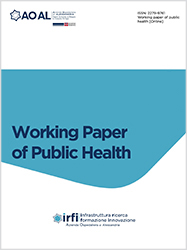The asbestos paradox: its use, spread and implications in the development of asbestos-related diseases
Accepted: 11 July 2016
All claims expressed in this article are solely those of the authors and do not necessarily represent those of their affiliated organizations, or those of the publisher, the editors and the reviewers. Any product that may be evaluated in this article or claim that may be made by its manufacturer is not guaranteed or endorsed by the publisher.
Introduction: Asbestos is a mineral widely used in the past decades in various commercial sectors, whose use is still present today despite the knowledge of its danger to human health. Methodology: In this article, the characteristics of asbestos and related pathologies are highlighted, reworking information and results derived from studies in the literature. Results: The difficulty of banning the use and marketing of asbestos despite the fact that this was decreed years ago is highlighted. Conclusion: The eradication of asbestos-related diseases is possible. It is necessary to work together in order to translate scientific knowledge into political and economic decisions.
PAGEPress has chosen to apply the Creative Commons Attribution NonCommercial 4.0 International License (CC BY-NC 4.0) to all manuscripts to be published.

 https://doi.org/10.4081/wpph.2015.6710
https://doi.org/10.4081/wpph.2015.6710




